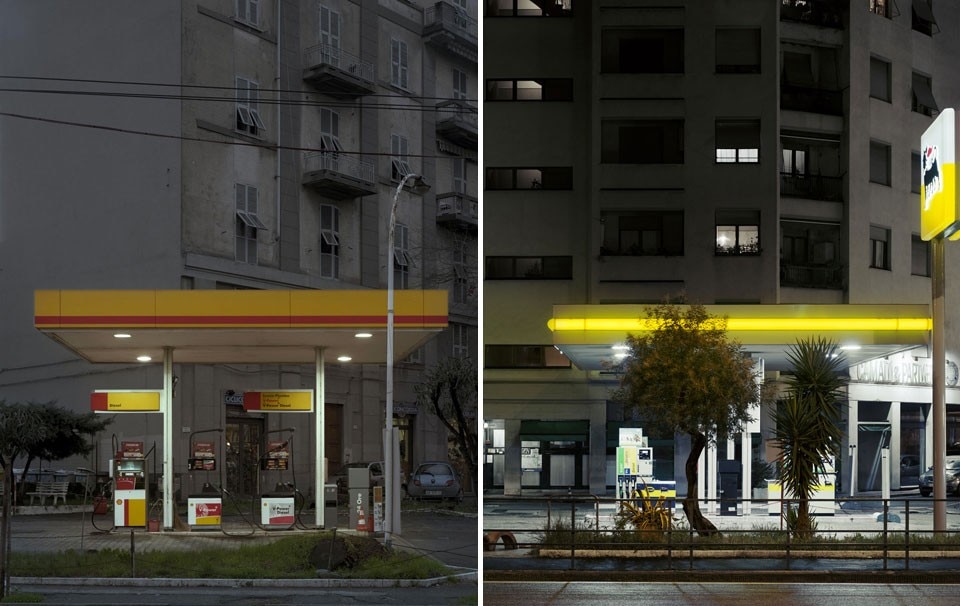With its current exhibition, “Energy. Oil and post-oil architecture and grids”, MAXXI takes another step forward in facing the most pressing issues of our times. And it does so in a most daring way — not through the mere documentation of existing projects but rather through commissioned research. "Energy" lies at the heart of a program that will range from a previous exhibit, "Recycle. Strategies for Architecture, City and Planet", to another one regarding the subject of community. The exhibition’s three sections, Stories, Frames and Visions, examine the past, the present and a possible future for the relationship between energy and landscape.
In the Stories section, projects and built works — gas stations, highway service stations, motels and towns like Metanopoli — by Ridolfi, Dardi, Gellner and Nervi narrate the fruitful collaboration between architects and the energy industry during the Italian post-war boom of the automobile, highways and speed. The show’s true conceptual and temporal roots can be found in this richly documented section, placed at the end of the exhibition.
.jpg.foto.rmedium.jpg)
.jpg.foto.rmedium.jpg)
.jpg.foto.rmedium.jpg)
The relationship between form and energy is more convincing in Noero Architects’ industrial micro-infrastructure. Starting from the realities of a small fishing village, the architects invent a device that can be located in between houses and in public space to help sustain new local economies.
MODUS Architects offers a simple but powerful proposal: 6,650 kilometres of Italian highway are doubled through the creation of a continuous and modulated raised ribbon containing 160 million square meters of solar park that can produce and distribute energy. If oil was once quantified in terms of volume, solar energy now requires surface area. This proposal could have been bolder, however, by giving substance to this area, thus truly combining form and technology.
.jpg.foto.rmedium.jpg)


Through 29 September 2013
Energy. Oil and post-oil architecture and networks
MAXXI Architettura
Stories curated by Margherita Guccione and Esmeralda Valente
Frames curated by Francesca Fabiani
Visions curated by Pippo Ciorra
Via Guido Reni, 4, Rome


.jpg.foto.rmedium.jpg)
